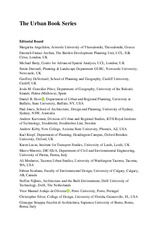Приказ основних података о документу
Reworking Studio Design Education Driven by 3D Printing Technologies
| dc.contributor | Arbizzani, Eugenio | |
| dc.contributor | Cangelli, Eliana | |
| dc.contributor | Clemente, Carola | |
| dc.contributor | Giofrè, Francesca | |
| dc.contributor | Giovenale, Anna Maria | |
| dc.contributor | Palme, Massimo | |
| dc.contributor | Paris, Spartaco | |
| dc.creator | Milošević, Jelena | |
| dc.creator | Nenadović, Aleksandra | |
| dc.creator | Žujović, Maša | |
| dc.creator | Gavrilović, Marko | |
| dc.creator | Živković, Milijana | |
| dc.date.accessioned | 2023-10-30T14:02:51Z | |
| dc.date.available | 2023-10-30T14:02:51Z | |
| dc.date.issued | 2023 | |
| dc.identifier.isbn | 978-3-031-29514-0 | |
| dc.identifier.isbn | 978-3-031-29515-7 (eBook) | |
| dc.identifier.issn | 2365-757X | |
| dc.identifier.issn | 2365-7588 (electronic) | |
| dc.identifier.uri | https://raf.arh.bg.ac.rs/handle/123456789/1383 | |
| dc.description.abstract | The advances and proliferation of digital technologies impact architectural practice asking for a revision of not only design production but also the education of future professionals. Using a case study from the University of Belgrade—Faculty of Architecture, this paper examines the efficient application of 3D printing as a design tool and opportunities for the implementation of this technology in architectural education. The research goal was to establish an educational framework for the studio course that was appropriate to local settings, starting with a review of educational approaches and the usage of 3D printing in architectural design. Starting with the premise that there is a bidirectional relationship between design and its tool, the educational framework for architectural design studio was proposed, tested in real educational settings, and evaluated. The results indicate that the use of 3D printing in studio course proved to be an effective tool for design exploration and presentation that supports (1) linking the logical way of thinking that requires parametric modeling with concept-based thinking; (2) change in mindset that occurs in the design process when students have a physical model in front of them to assess; and (3) improvement of deep understanding of spatial cognition among students as well as their competencies related to the use of the specific technology in the design process. The paper demonstrates how 3D printing technology improved educational methods, impacted students’ experiences in the design process, and elevated design exploration to previously unattainable levels of materiality, detail, complexity, accuracy, and aesthetics. | sr |
| dc.language.iso | en | sr |
| dc.publisher | Berlin: Springer | sr |
| dc.rights | openAccess | sr |
| dc.rights.uri | https://creativecommons.org/licenses/by/4.0/ | |
| dc.source | Technological Imagination in the Green and Digital Transition. CONF. ITECH 2022. The Urban Book Series | sr |
| dc.subject | Design process | sr |
| dc.subject | Design tools | sr |
| dc.subject | Design Studio | sr |
| dc.subject | Architectural Education | sr |
| dc.subject | 3D printing | sr |
| dc.title | Reworking Studio Design Education Driven by 3D Printing Technologies | sr |
| dc.type | bookPart | sr |
| dc.rights.license | BY | sr |
| dcterms.abstract | Ненадовић, Aлександра; Жујовић, Маша; Милошевић, Јелена; Гавриловић, Марко; Живковић, Милијана; | |
| dc.rights.holder | Jelena Milošević | sr |
| dc.citation.spage | 335 | |
| dc.citation.epage | 344 | |
| dc.description.other | Поглавље у тематском зборнику међународног значаја под насловом: ”Technological Imagination in the Green and Digital Transition” чији су уредници: Eugenio Arbizzani, Eliana Cangelli, Carola Clemente, Fabrizio Cumo, Francesca Giofrè, Anna Maria Giovenale, Massimo Palme & Spartaco Paris, који чини селекција радова изложених на конференцији CONF.ITECH 2022: Technological Imagination in the Green and Digital Transition, која је одржана јуна 2022. године на Универзитету Сапијенца у Риму. | sr |
| dc.identifier.doi | 10.1007/978-3-031-29515-7_30 | |
| dc.identifier.fulltext | http://raf.arh.bg.ac.rs/bitstream/id/4788/UBS_Milosevic.pdf | |
| dc.type.version | publishedVersion | sr |

